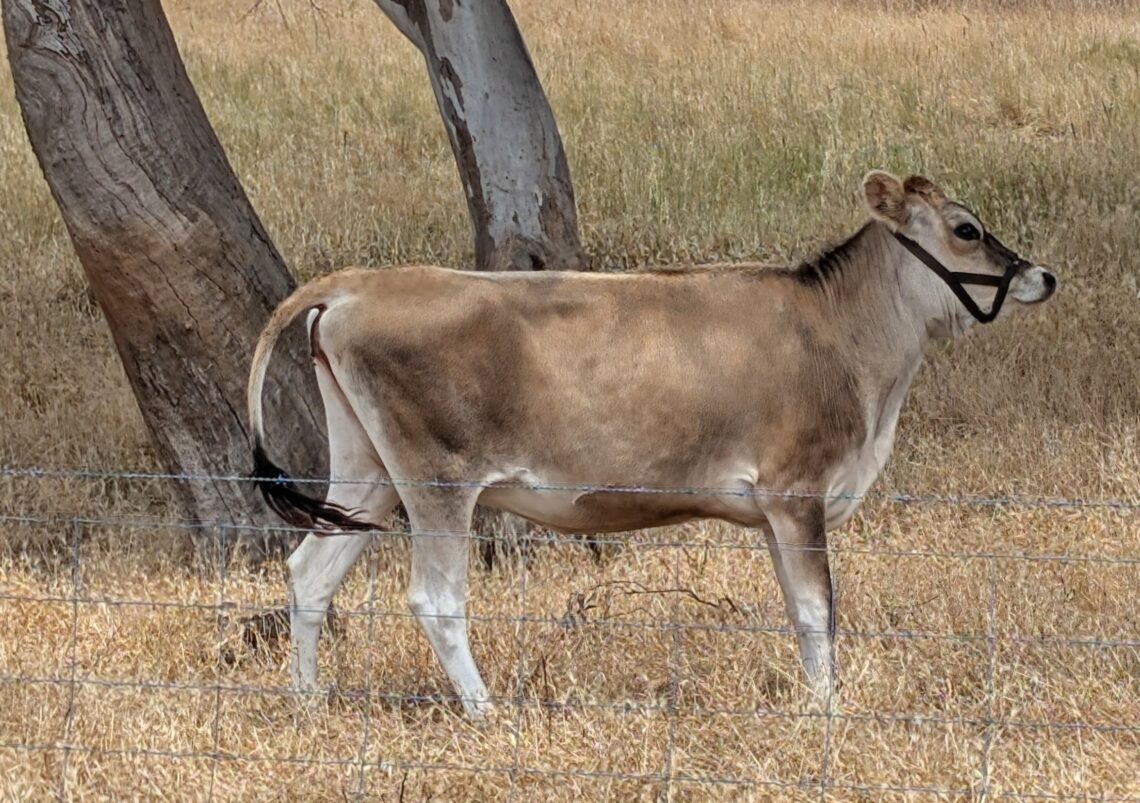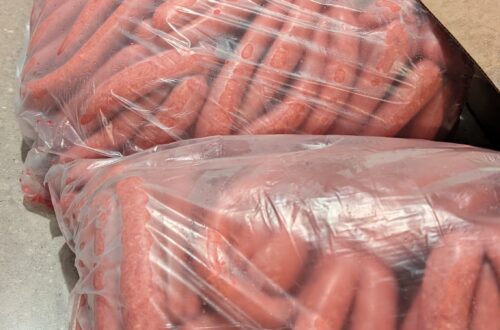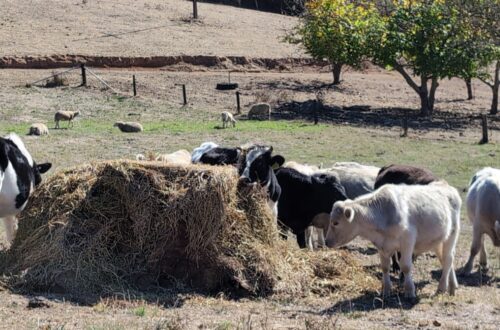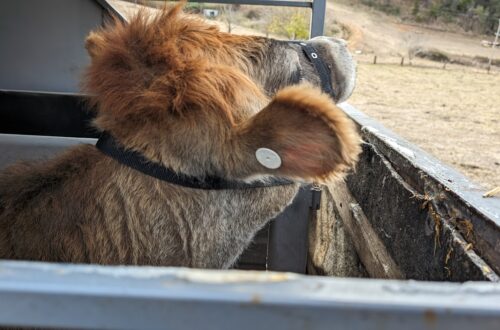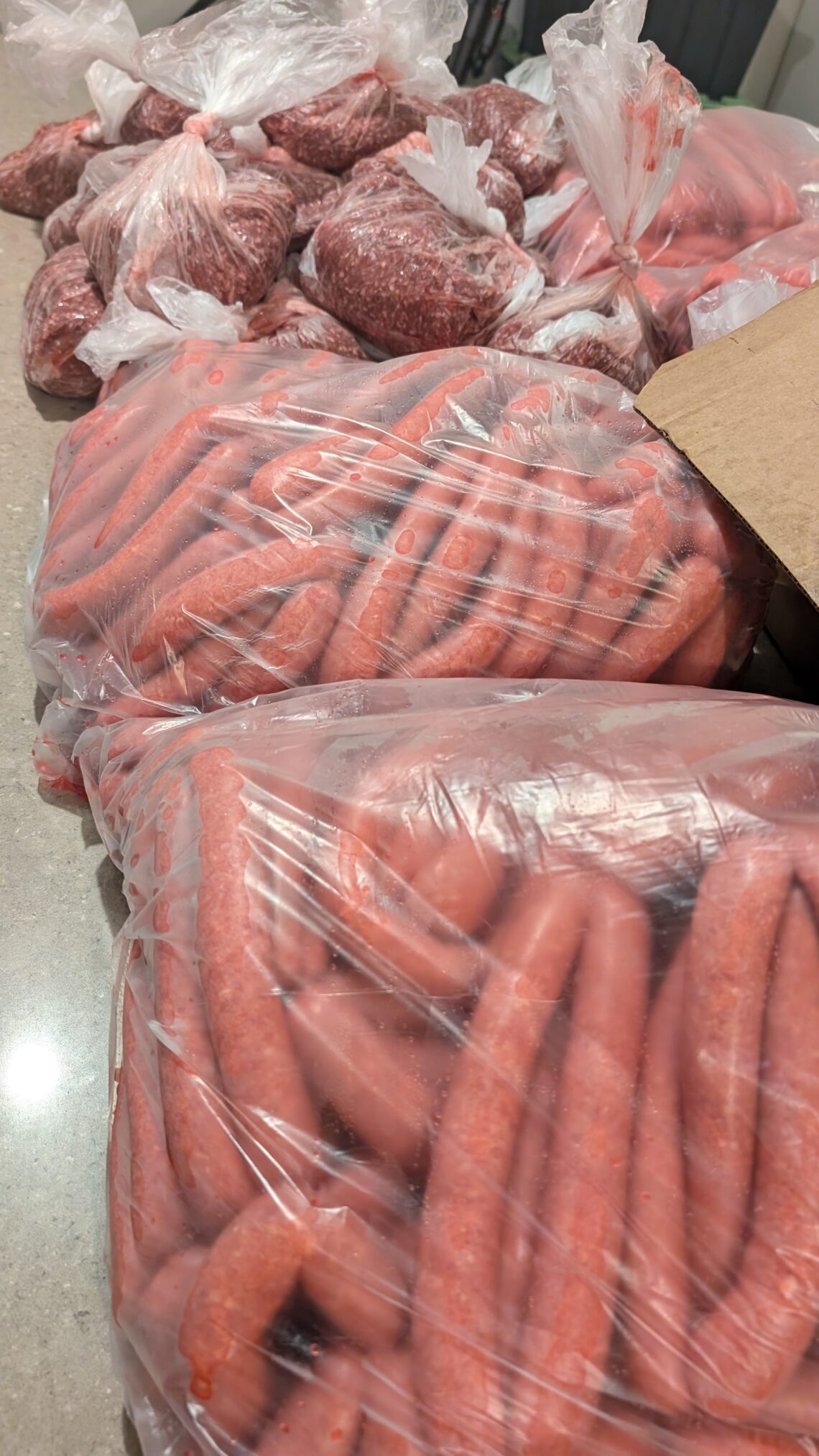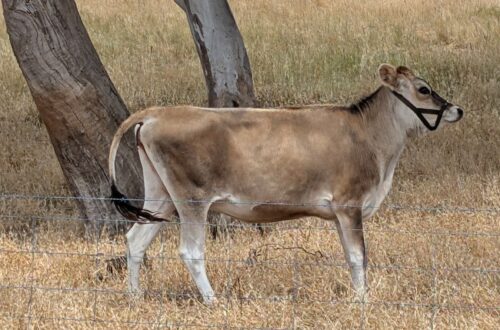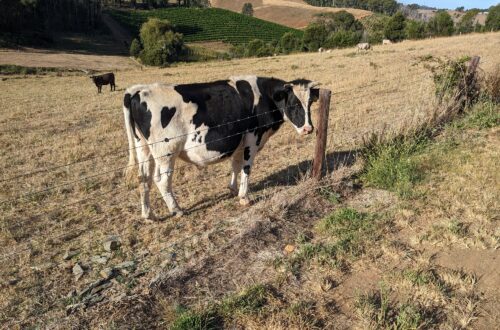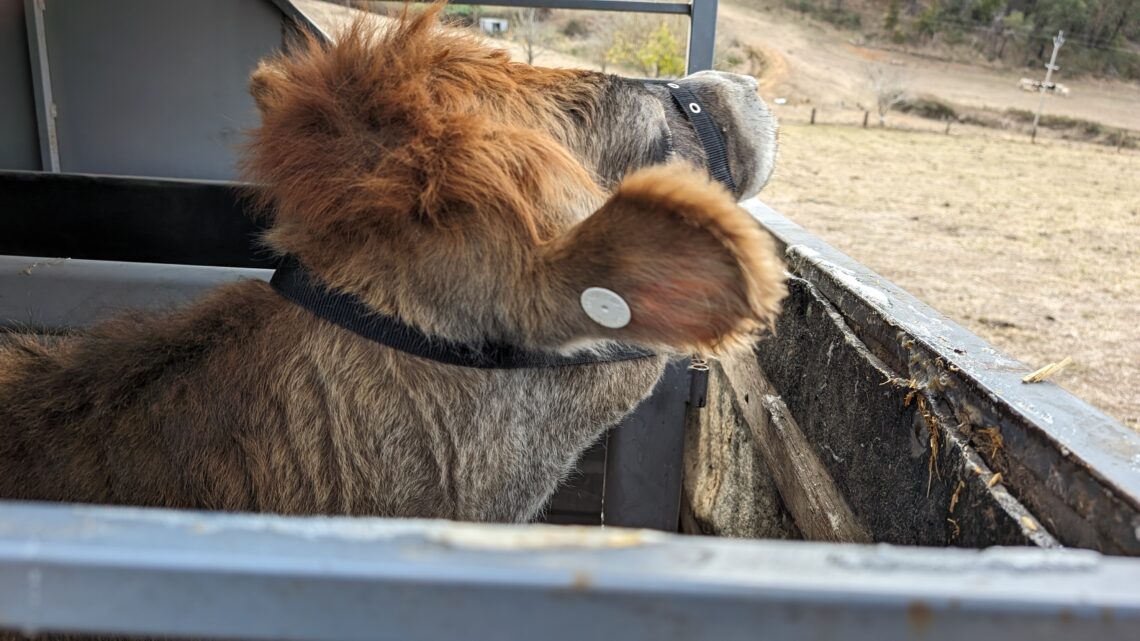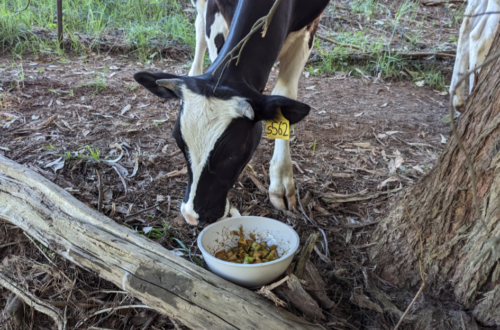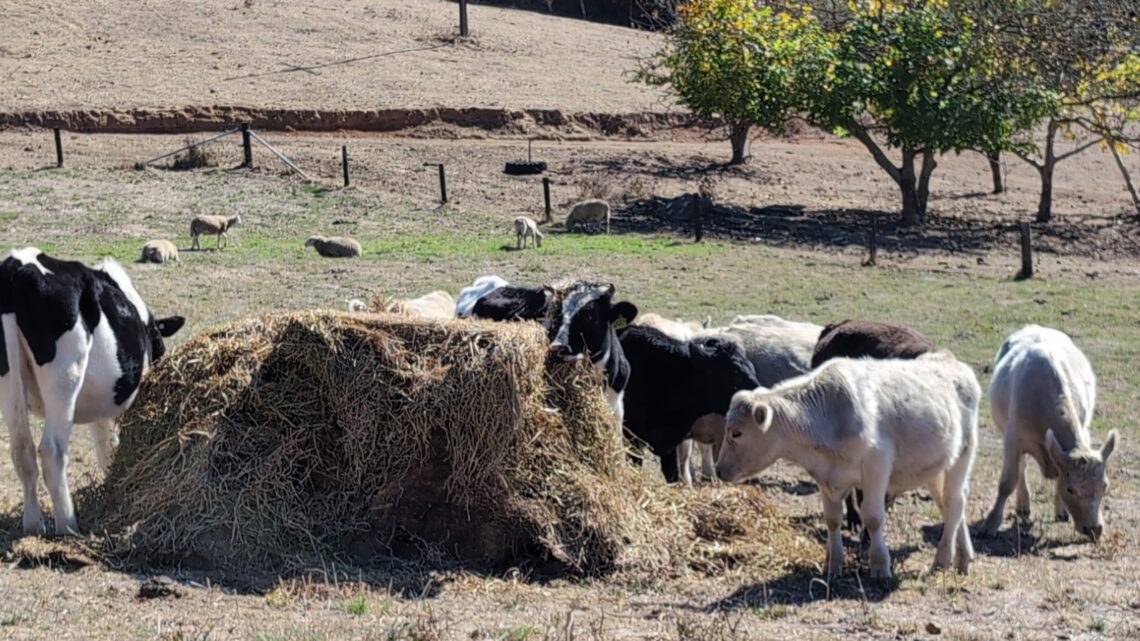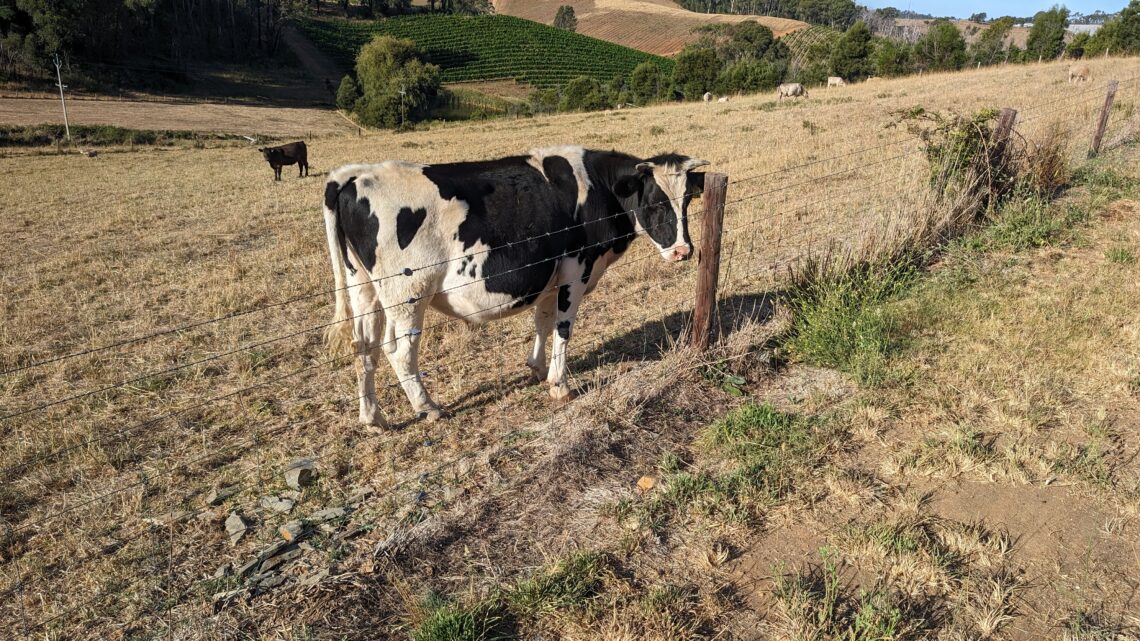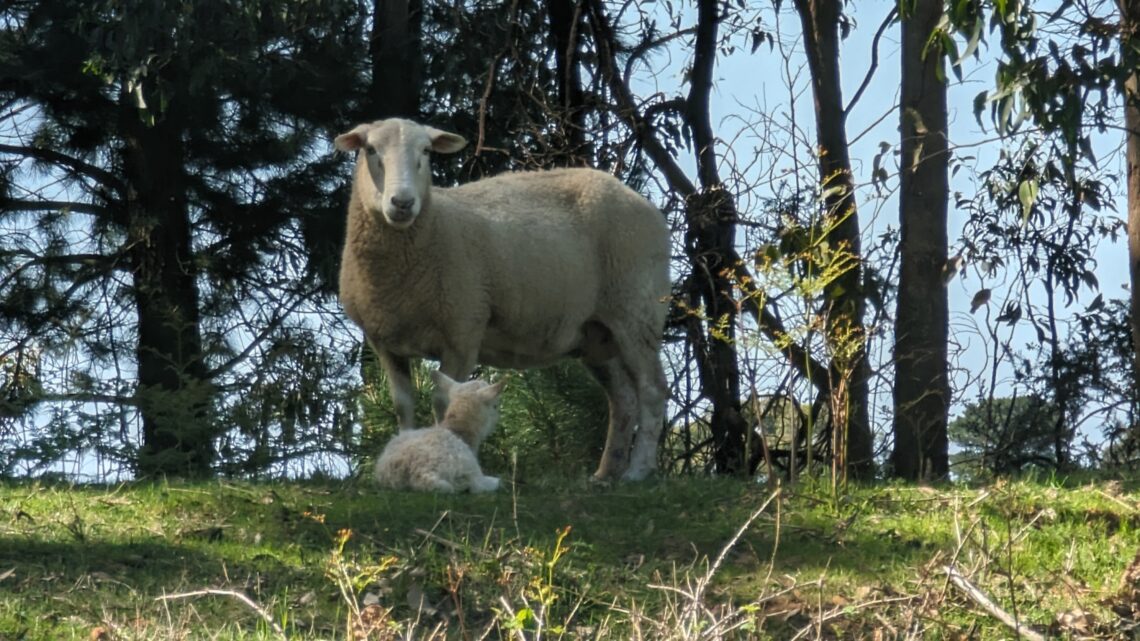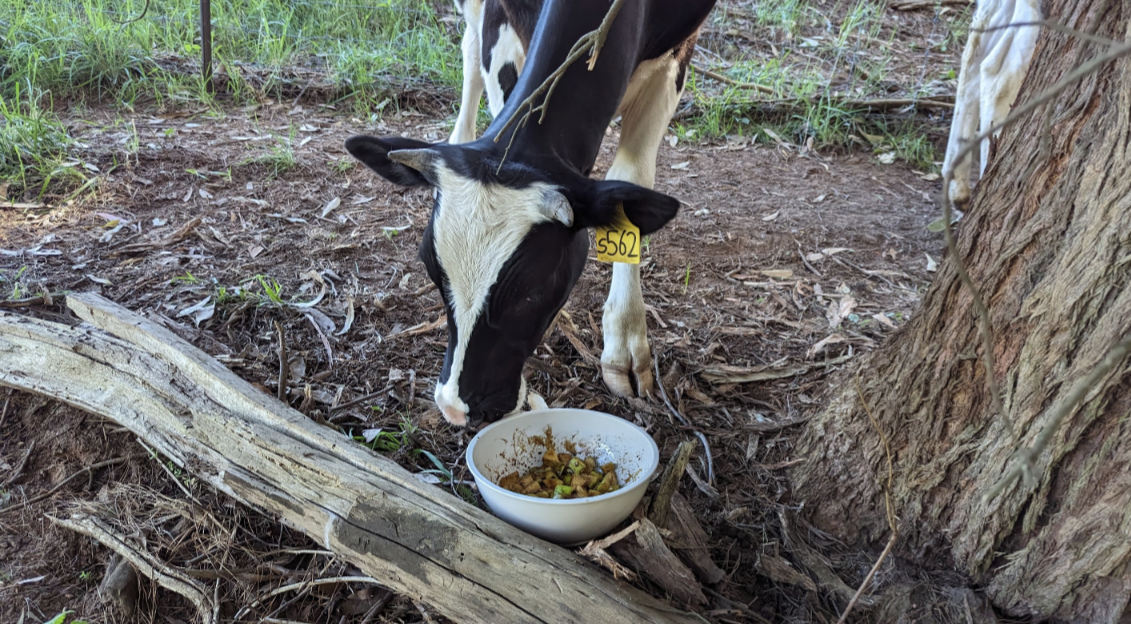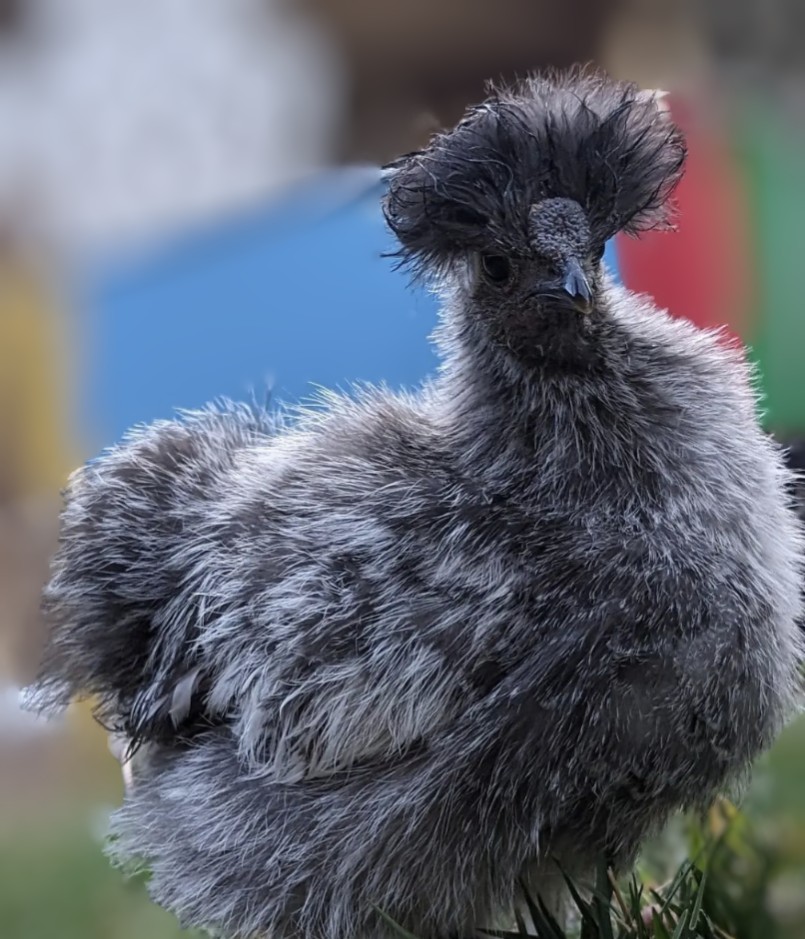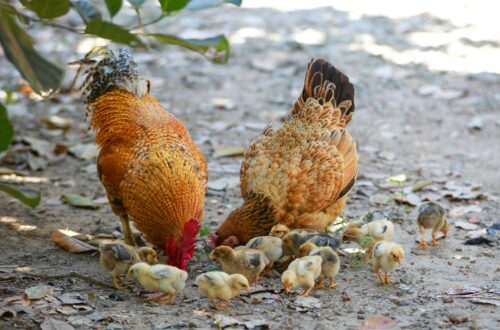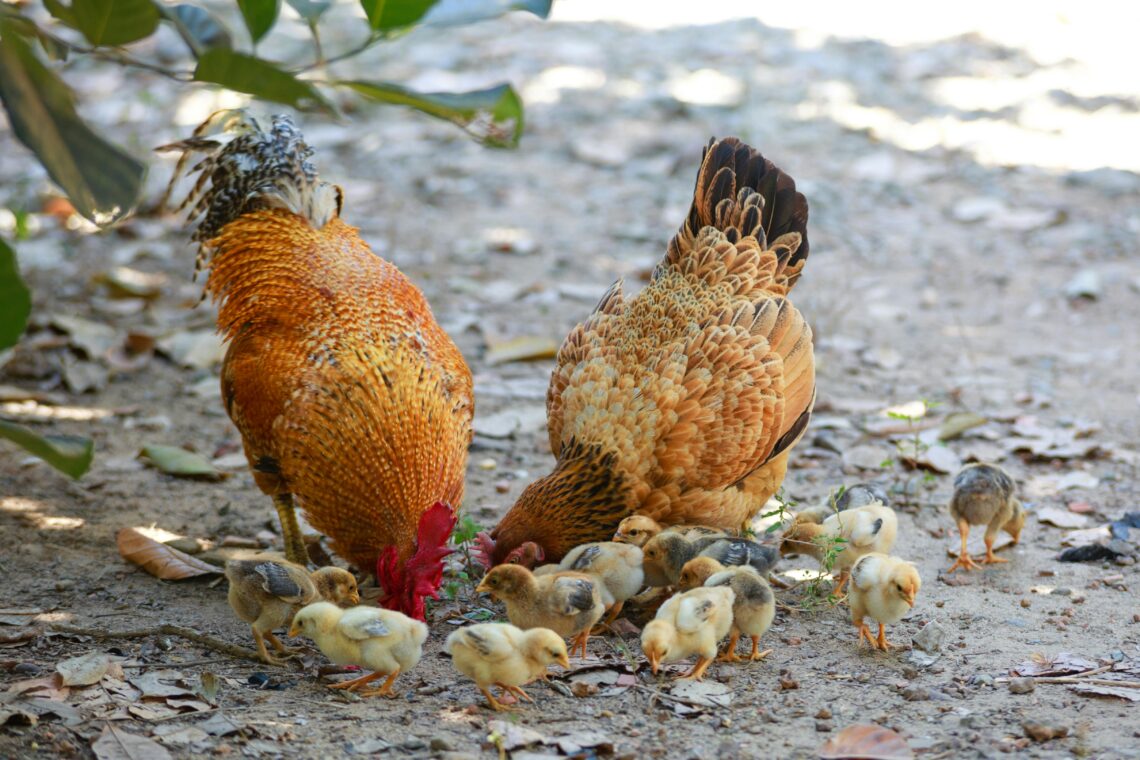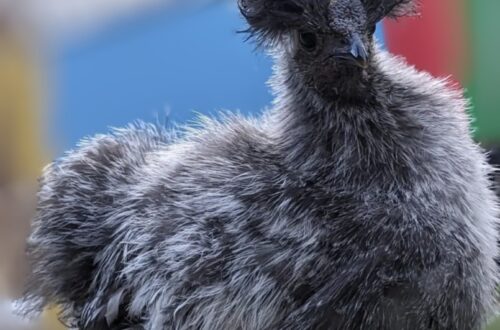Livestock
Here you can find all the Animals we keep around the homestead
-
House cow part 2
With very little experience we bought Honey the house cow home, see here for part 1. With everything we’ve had going on lately, I haven’t had the chance to share any updates on Honey’s progress. Between the projects and day-to-day tasks on the farm, time has flown by. I’m excited to finally take a moment to reflect on how far we’ve come with the house cow training. It’s been a journey to help Honey feel comfortable and at ease with us. I’d love to share the steps we took to build her trust and create a bond. Here’s a glimpse into how we’ve been working with her and the progress…
-
A new butcher less delays.
We bought our cattle with the idea of insuring the meat we dish up was raised as ethically as possible, unfortunately due to so many set backs of trying for 6 months to get the Holsteins sent off to the butcher, we returned from NSW to find the paddocks dry and feed prices skyrocketing, with the quality of available feed significantly deteriorating. Hard choices in hard times. Watching the steers eat poor-quality feed and their condition steadily decline, we decided to find a different butcher. We called around and found a local butcher who could book one of the steers within a fortnight. We chose to send off the smaller…
-
House Cow Part 1
Mooving forward with plans After buying our acreage, I reminded myself to take things slowly until we moved onsite. Lanky, however, charged ahead. When cattle prices dropped, he started ordering cattle without considering the long-term goals. He initially planned to get steers. After overhearing a phone conversation about the lack of steers at the auction, I suggested, “Why not get heifers so we can breed them instead?” We purchased our heifers at the wonderfully low price of $250-300 each. I had always planned to get a house cow. I wanted to wait because dairy animals require significant time and effort for breeding and milking. Sometimes, the right opportunity comes unexpectedly.…
-
Outsourcing of feed.
Raising livestock on your property comes with its fair share of challenges, especially in Australia, where concerns like feed and water supply weigh heavily on farmers’ minds. The recommended stocking rates typically suggest about 1 head per 2-2.5 acres, for cattle. Delays Compound into issues. Unfortunately, we encountered delays in processing 6 sheep and 2 Holstein steers for the freezer, compounded by delays in rain this Autumn. This forced us to seek supplementary feed. Although we left with what seemed like enough pasture and a few backup round bales, which we got someone to roll out during week 2 of our absence, we returned only to find that the lack…
-
Delays for the Friesian Holsteins
Regrettably, due to a COVID outbreak in the Adelaide Hills, we must postpone the butchering of the Friesian Holstein steers. One challenge with Friesian Holsteins is their large size. If they age too much some abattoirs may refuse to handle them due to the size of their carcasses and associated handling regulations. Therefore, we are hopeful that the abattoirs will reschedule their booking as soon as possible to avoid the need to seek a home butcher. However, utilizing a home butcher presents legal constraints, as we are prohibited from transporting the meat off our property. This poses significant issues for our plans to share some of the meat with family…
-
Sheep From Flock to Farewell:
Sheep and I have never been the best of friends. Back in my seventh-grade agriculture lessons, I learned some of the ins and outs of caring for these woolly creatures. From shearing and tail docking to keeping them alive (which proved trickier than you’d think), fending off predators, and shooing away flies – the list of responsibilities seemed endless. Disappointment in the Hills. When we relocated to “The Hill,” my disappointment peaked upon discovering that our neighbors were predominantly sheep farmers. While there were a few goat, donkey, and cattle enthusiasts in our paradise, sheep dominated the landscape. When the time came for us to dip our toes into livestock…
-
Our first Cattle
Our journey into the world of cattle began on the humble grounds of our rental property, before the dream of our own acreage turned to reality. When we inked the lease, the owner granted us the freedom to introduce a handful of livestock. Yet, a caveat lingered in the air—a neighbor was entrusted with the land for his sheep, for the first year however the owner said he is happy for us to share or wait till the year was up and take over the full management of the land. Passing of time and new arrivals A year passed, spent observing cautiously as we hesitated to disturb the neighbors’ flock.…
-
Incubating Chicken Eggs
Every homestead needs chickens, but what to do if you don’t have a local source, or maybe you want a harder to acquire breed. this is where incubating can come in handy. Incubating chicken eggs is a delicate process that requires careful attention to temperature, humidity, and turning of the eggs. Here’s a general guide on incubating chicken eggs: How to Issues To minimize these issues when incubating chicken eggs, it’s essential to carefully monitor and maintain incubation conditions, handle eggs with care, and address any problems promptly. Additionally, selecting high-quality eggs from healthy breeding stock can improve hatch rates and the overall health of the chicks. If you would…
-
The Indispensable Role of Chickens.
Are chickens the secret sauce to a thriving homestead, or are they the unsung heroes of sustainable living? Whether you’re caught up in the mysterious allure of chicken math—skipping a few, counting a few, and then suddenly reaching 99, 100—or not, one thing is for sure: chickens are an invaluable addition to any homestead. These feathered wonders go beyond merely providing us with a steady supply of eggs and meat. They play a crucial role in transforming your homestead into a thriving, self-sufficient haven. Imagine your homestead with chickens expertly turning soil, leaving behind nitrogen-rich manure that acts as hot compost for your garden. Additionally, their voracious appetite for bugs…
